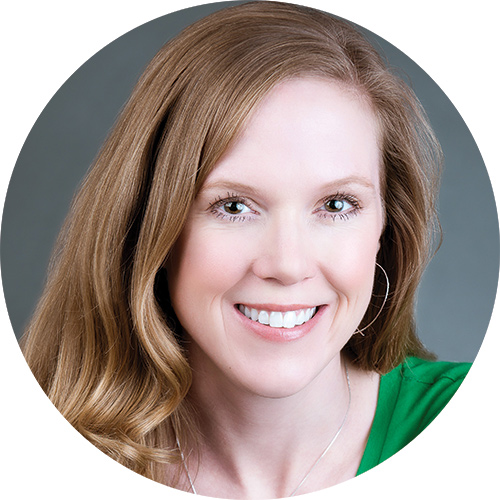By Meadows Senior Fellow Jenni Schaefer
“Just eat,” well-meaning friends said.
I was in recovery from an eating disorder.
I couldn’t “just eat,” because, for one, I didn’t “just” choose to have an eating disorder in the first place. In fact, research suggests that 50-80% of eating disorder risk is due to genetic effects.
Back when I was struggling, some implied that it was “all in my head.” Indeed, one more reason why I couldn’t “just eat,” is because it was in my head—in a real, physical way: my brain.
“Eating disorders are presumably brain disorders,” says Thomas Insel, former director of the U.S. National Institute of Mental Health.
The brain is an organ in the body just like any other.
Mental illness is physical illness.
When both of my parents battled cancer, no one encouraged them to “just get over it,” or “let it go.” Yet I heard these types of things far too many times in regard to eating-disordered behaviors.
An overarching myth is that an eating disorder “looks” a certain way. But people of all shapes and sizes, genders, races — and on and on — might struggle.
If I could have just “let it go,” I wouldn’t have been diagnosed with anorexia nervosa. Over the course of time, symptoms locked into my brain; the power of choice was all but gone.
The hard work of recovery can restore choice. To make this happen, we need support — lots of it. It can also be crucial to seek expert professional help from those specifically trained in eating disorders.
One friend with atypical anorexia (anorexic features without low weight) tells me that uniformed healthcare professionals continually prescribe that she goes on a diet. My friend isn’t underweight according to some official BMI chart, but she is restricting food and engaging in other destructive behaviors— just like I did. We received different advice purely based on our body sizes: I was underweight.
Life-threatening eating disorders of all kinds continue to get missed, dismissed, and even fueled — by prescribing dieting, just as one dangerous example.
An overarching myth is that an eating disorder “looks” a certain way. But people of all shapes and sizes, genders, races — and on and on — might struggle.
Recovery doesn’t look a specific way either.
And, recovery is possible.
Some of the same genetics that made us more vulnerable to developing an eating disorder in the first place can help us to get better. For instance, I learned to apply my perfectionism to recovery, harnessing the power out of the trait: regularly attending appointments, completing homework — and never, never, never giving up.
Some of the same loved ones who stumbled with misguided words early on learned differently. We teach people how to support us. What feels supportive to you (or your loved one)?
 An eating disorder is a complicated illness with no black and white answers. Due to this complexity, it can be beneficial for loved ones to be involved in therapy as well. One of the most powerful components of my recovery was participating in therapy sessions with my parents. I learned that I am not as good at mind reading as I had thought. I also learned that I needed to speak more directly, in general, with people in my life. Keeping lines of communication open was key.
An eating disorder is a complicated illness with no black and white answers. Due to this complexity, it can be beneficial for loved ones to be involved in therapy as well. One of the most powerful components of my recovery was participating in therapy sessions with my parents. I learned that I am not as good at mind reading as I had thought. I also learned that I needed to speak more directly, in general, with people in my life. Keeping lines of communication open was key.
My parents came to see that they never needed to understand my eating disorder. They needed to believe me. When I said, “I feel scared,” I needed them to say something like: I hear you. I believe you. I am here for you.
My friends and family also learned more: Eating disorders aren’t really about food or body image, as society tends to believe. Eating disorders are biopsychosocial illnesses. That is a big, fancy word that means there is a lot going on. For some, layers of trauma are beneath an eating disorder. My anorexia had been fueled by not only perfectionism, but also low self-esteem, unrelenting self-criticism, and much more.
We teach people how to support us. What feels supportive to you (or your loved one)?
What all of this means is that recovery is about a lot more, too. When we do the hard work of restoring our power of choice, we are stronger than before — in oh so many ways. We might even gain the courage to pursue a passion we had always dreamed about: I learned how to play guitar.
Along the journey of healing, we might fall flat on our faces.
Healing means standing back up again.
Sometimes, it feels like we can’t. That is just a part of recovery.
Still, we reach out. We grab hands. Through the pain, denial, and everything else, sometimes, in fact, we “just” do it.
We do recovery anyway.

About Senior Fellow Jenni Schaefer
A Meadows Senior Fellow and advocate for its specialty eating disorders program, The Meadows Ranch, Jenni Schaefer is the bestselling author of Life Without Ed, Almost Anorexic, and Goodbye Ed, Hello Me. Her next release, Facing the Invisible Monster: How I Came Back from Trauma and How You Can Too, is scheduled for a January 2022 release.
Schaefer graduated summa cum laude from Texas A&M University with a degree in biochemistry, and she knows firsthand the devastating consequences of an eating disorder. Since recovering from her own eating disorder, she has carried her message of self-acceptance and triumph over adversity to the public. A sought-after speaker on addiction and food disorders, relationships, depression, and career, Jenni has appeared on Dr. Phil, Dr. Oz, the TODAY show and Entertainment Tonight, as well as in print coverage from Cosmopolitan and The New York Times.
For more information, visit JenniSchaefer.com.
Sources:
- M. Chavez and T. R. Insel, “Eating Disorders: National Institute of Mental Health’s Perspective,” American Psychologist 62 (2007): 164.
- C. M. Bulik, “Genetic Risk Factor for Eating Disorders,” Eating Disorders Review, Fall 2007.

